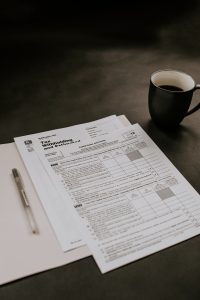Forex trading is a complex and challenging endeavor, requiring traders to constantly monitor market conditions and adjust their strategies accordingly. One crucial aspect of successful forex trading is understanding and managing liquidity. Liquidity refers to the ease with which a trader can buy or sell a particular currency pair at any given time, without affecting the price of the asset. In this article, we will explore how to trade liquidity in forex and how it can impact your trading results.
What is liquidity in forex trading?
Liquidity in forex trading refers to the degree to which a currency pair can be bought or sold quickly without affecting its price. In other words, it is the ability to enter and exit a trade in a timely manner without causing a significant impact on the market. Currency pairs with high liquidity have a large number of buyers and sellers, while currency pairs with low liquidity have few participants.
Liquidity is essential for forex traders as it ensures that trades can be executed quickly and at a fair price. Without sufficient liquidity, traders may struggle to enter or exit positions, leading to slippage or unfavorable prices. This can result in significant losses, particularly for those trading with high leverage.
Factors that affect liquidity in forex trading
Several factors can affect liquidity in forex trading, including:
– Economic events: Economic events such as interest rate decisions, GDP reports, and employment data releases can significantly impact market liquidity. These events can create volatility and uncertainty, causing traders to refrain from trading until the market stabilizes.
– Market hours: Forex markets operate 24 hours a day, five days a week. However, liquidity can vary depending on the time of day, with peak liquidity occurring during the overlap of the European and US trading sessions.
– Currency pairs: Some currency pairs are more liquid than others. Major currency pairs such as EUR/USD and USD/JPY typically have high liquidity, while exotic currency pairs have lower liquidity.
How to trade liquidity in forex
Trading liquidity in forex involves understanding market conditions and using appropriate strategies to enter and exit trades. Here are some tips to help you trade liquidity in forex effectively:
1. Trade during peak hours: As mentioned earlier, peak liquidity occurs during the overlap of the European and US trading sessions. This is when the market is most active, with the highest number of traders buying and selling currencies. Trading during these hours can help ensure that you can execute trades quickly and at a fair price.
2. Choose liquid currency pairs: It’s essential to choose currency pairs with high liquidity, as this ensures that trades can be executed quickly and at a fair price. Major currency pairs such as EUR/USD, USD/JPY, and GBP/USD are typically more liquid than exotic currency pairs.
3. Monitor economic events: Economic events can significantly impact market liquidity, causing volatility and uncertainty. It’s essential to monitor economic calendars and avoid trading during high-impact events to minimize the risk of slippage or unfavorable prices.
4. Use appropriate trading strategies: Different trading strategies are suited to different market conditions. In low-liquidity markets, it’s best to use strategies that are less reliant on market movement, such as range trading or scalping. In high-liquidity markets, you may be able to use more trend-following or momentum-based strategies.
5. Use appropriate risk management techniques: Liquidity can impact the execution of trades, leading to slippage or unfavorable prices. It’s essential to use appropriate risk management techniques, such as setting stop-loss orders or using trailing stops, to minimize the impact of market volatility on your trades.
In conclusion, trading liquidity in forex is essential for successful trading. Understanding the factors that impact liquidity and using appropriate trading strategies and risk management techniques can help traders execute trades quickly and at a fair price, minimizing the risk of losses. By trading during peak hours, choosing liquid currency pairs, monitoring economic events, using appropriate trading strategies, and using appropriate risk management techniques, traders can effectively trade liquidity in forex.





